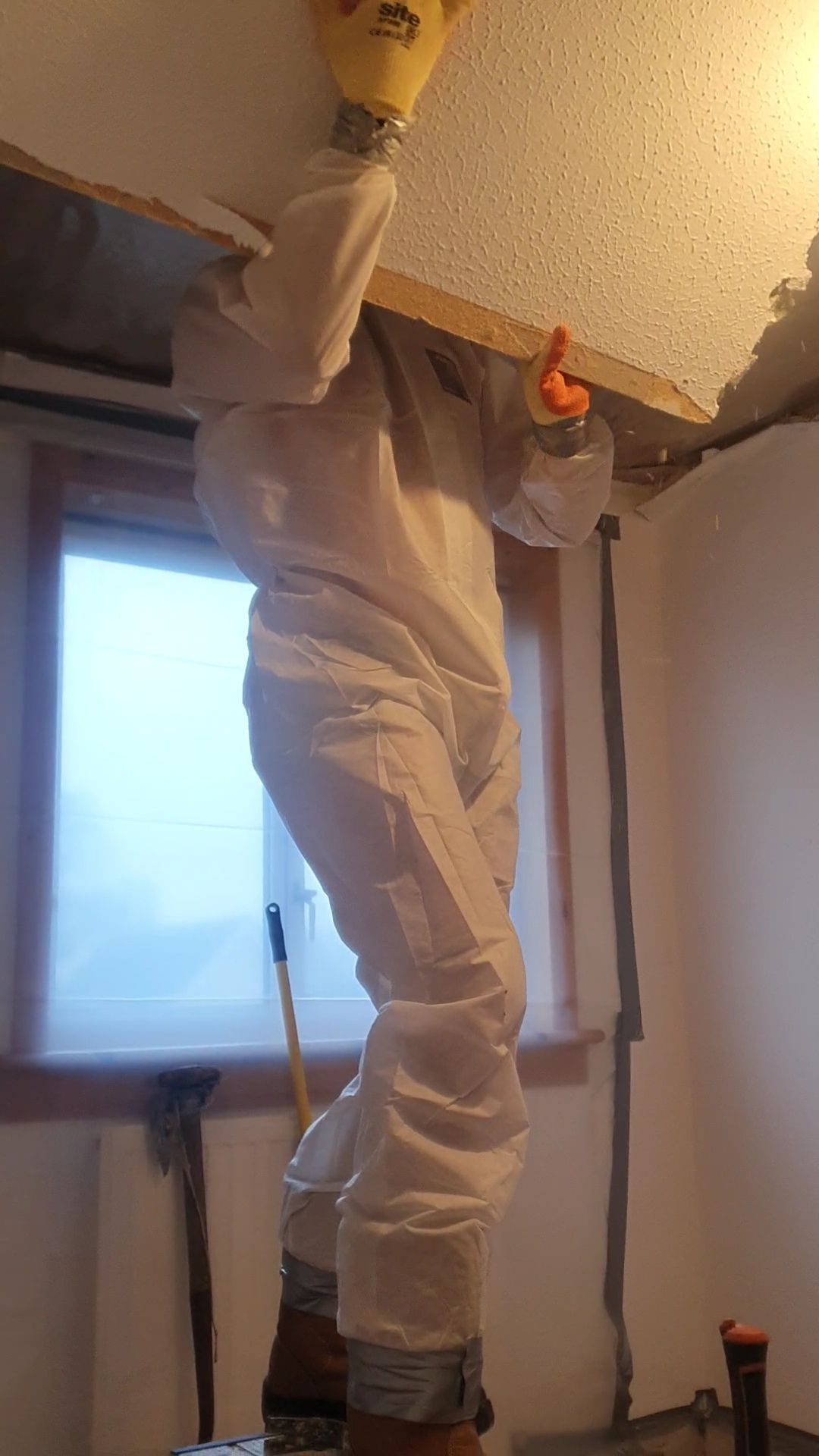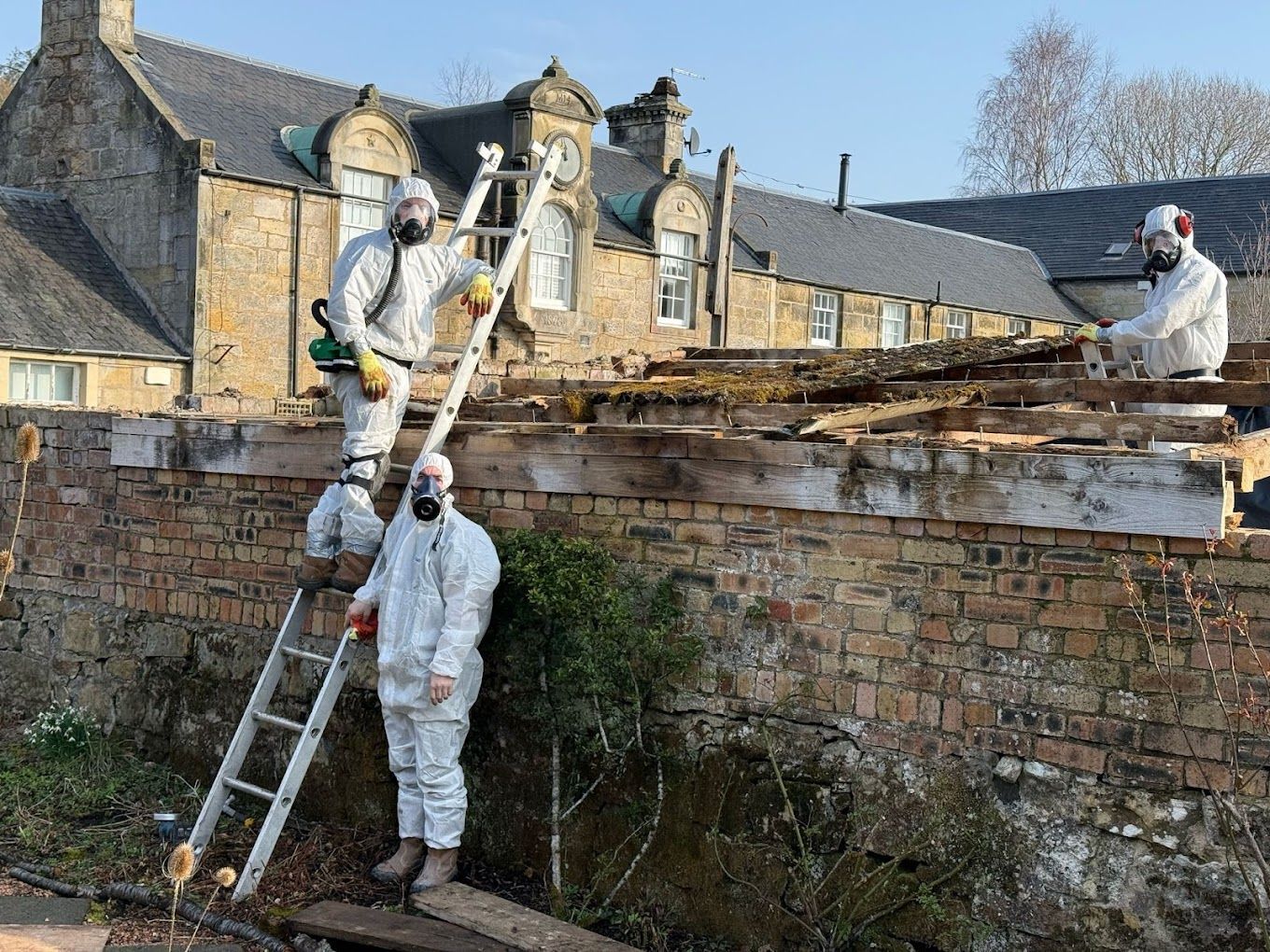Title: Safeguarding Workplaces: Comprehensive Emergency Procedures for Asbestos Cement Incidents
Asbestos Vinyl Tile Discovery
Asbestos cement, a widely-used construction material in the past, is a potential health hazard when its fibres come loose and become airborne. Despite regulations and awareness campaigns, asbestos cement incidents still happen. Since there is always a risk for workers and bystanders, emergency procedures must be exceptionally well-developed. In this article, we explain the need for good emergency procedures for asbestos cement incidents and what steps workers need to take to minimise the risk.
Understanding Asbestos Cement An example of a deadly silicate asbestos cement (ACC) Asbestos cement, or, more properly, asbestos-containing cement was widely used in building supplies until it proved to be too hazardous. Made from a mixture of variable amounts of asbestos with cement, sand, synthetic fibres, iron and steel for added strength, it has some of the most desirable properties as a building material; extremely durable, highly effective as a firebreak and highly insulating. However, the problem is that asbestos fibres are released if the material is disturbed.
There is now almost unanimous scientific and medical agreement that both asbestos and asbestos cement are or were extremely harmful to health: inhalation of the silicate fibres causes silicosis, causing lesions of the lungs which is deadly; it is also a carcinogen. Importance of Emergency Procedures Although asbestos products are extremely well regulated, and asbestos-containing materials are being progressively removed from most markets and buildings, properly trained and equipped responders who are aware of these protocols can still encounter asbestos cement during maintenance, renovation and demolition operations. Responders to these accidental encounters with asbestos products should be familiar with and follow emergency procedures conducive to neutralising asbestos risks, eliminating sources and protect the workers and bystanders who might be exposed. Comprehensive Emergency Procedures for Asbestos Cement Incidents In the case of the uncontrolled release of asbestos fibres from cement materials in a situation where a hazardous material exists, and likely serious consequences might follow, the following actions seem appropriate.
1. Immediate Action Upon discovering asbestos cement disturbance, immediately stop all work activities in the area. Alert anyone who might have been exposed, and clear the vicinity of anything and anyone non-essential to the situation to prevent further contamination.
2. Identification of the Cause
1. Determine whether or not the intense heat of cooking over charcoal is responsible for the asbestos cement disturbance, or whether other factors, including accidental damage and renovation work, have occurred that are not evident from the photos. Understanding the cause of the asbestos cement disturbance is key to taking appropriate remedial measures.
2. Document the level of asbestos contamination in PM at the field site.
3. Regaining Control Make immediate efforts to stop the exposure. This might include the quarantine of the area, confinement of the damaged material, and containment to stop the release of asbestos fibres.
4. Protection and Decontamination Make sure all those working in the affected area are suitably wearing PPE, including RPE, so as to minimise their exposure to airborne asbestos fibres. any person who has been exposed to asbestos dust or debris shall be subject to decontamination.
5. Clean-Up Procedures Asbestos dust and debris should be removed, loaded into sealed bags and disposed of by appropriate means. Asbestos-contaminated materials should be cleaned or removed using recognised cleaning procedures.
6. Disposal of Contaminated Materials All asbestos waste must be disposed of according to all regulatory requirements for hazardous waste disposal. Packaging and labelling is important so no further environmental or health risks result.
7. Consideration for Lone and Remote Workers Ensure that they are particularly sensitive to lone or remote workers who might be more vulnerable in emergency situations, making sure that everyone has access to emergency response plans, and that they feel supported and able to communicate with other employees.
Conclusion Experts who have developed procedures to deal with asbestos incidents recognise the importance of having detailed, site-specific emergency procedures to deal with unplanned releases of asbestos fibres associated with asbestos cement. To minimise risks – and ensure the health and safety of the workers and the surrounding community – immediate response procedures that fully take into account the unique risks associated with asbestos cement should be implemented rapidly and decisively. Remember, for asbestos cement, preparedness is everything.






